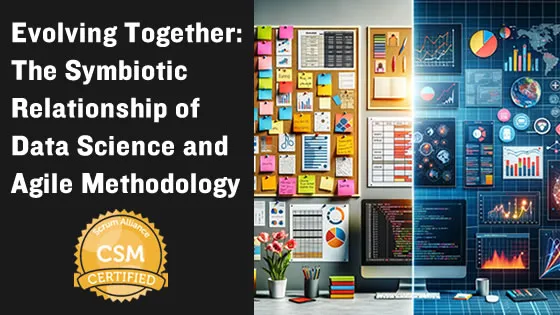Evolving Together: The Symbiotic Relationship of Data Science and Agile Methodology

A few years ago, we explored the promising union of Data Science and Scrum methodology. After years of practicing and refining these processes, it’s time to revisit and delve deeper into how this combination has evolved and continues to thrive.
The Iterative Dance: Data Science and Agile
Data Science is inherently iterative, with tasks such as training a baseline model or evaluating a dataset’s schema. Agile methodologies, including Scrum, Kanban, and Extreme Programming (XP), focus on iterative progress towards larger milestones, fostering communication and rapid product delivery.
Adapting to Change
Agile’s flexibility allows teams to pivot and refocus efforts efficiently when data issues emerge unexpectedly. This adaptability has proven invaluable in navigating the dynamic landscape of data-driven projects.
Agile Methodologies in Data Science
Scrum
Scrum offers a simple framework to address complex project issues while ensuring high-quality end products.
Kanban
Kanban manages and controls the flow of features, focusing on work in progress (WIP) limits.
Extreme Programming (XP)
XP emphasizes communication, feedback, and simplicity.
OSEMN Framework in Data Science
The OSEMN framework outlines the steps in a data science project:
- Obtaining data
- Scrubbing data
- Exploring data
- Modeling data
- Interpreting data
Agile methodologies align well with this framework, providing structure and adaptability.
Prioritization and Planning
Agile methodologies enable data scientists to prioritize models and data according to project goals, facilitating communication with non-technical stakeholders.
Research vs. Development
Data science projects often require constant experimentation and research, making the iterative nature of Agile methodologies a perfect fit.
Pros and Cons of Agile in Data Science
Pros
Planning and Prioritization
Agile methodologies, such as Scrum, facilitate planning and prioritization at the start of each sprint, aligning the data team with organizational needs.
Clearly Defined Tasks
Defining tasks with clear objectives and deliverables helps teams stay focused and measure progress effectively.
Cons
While Agile offers many benefits for data science projects, it’s important to recognize that the exploratory nature of data science can sometimes conflict with the structured sprint cycles of Agile methodologies. Teams must find the right balance between structure and flexibility.
Conclusion
The symbiotic relationship between Data Science and Agile methodologies continues to evolve and strengthen. By combining the iterative, experimental nature of data science with the structured, adaptive framework of Agile, teams can deliver better results while maintaining flexibility and clear communication with stakeholders.
As we continue to refine these processes, the integration of Data Science and Agile methodologies will remain a powerful approach for organizations looking to leverage data-driven insights while maintaining agility in their development processes.